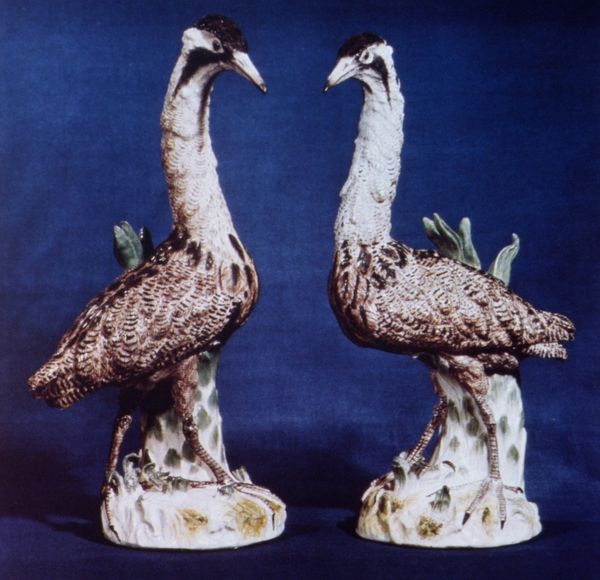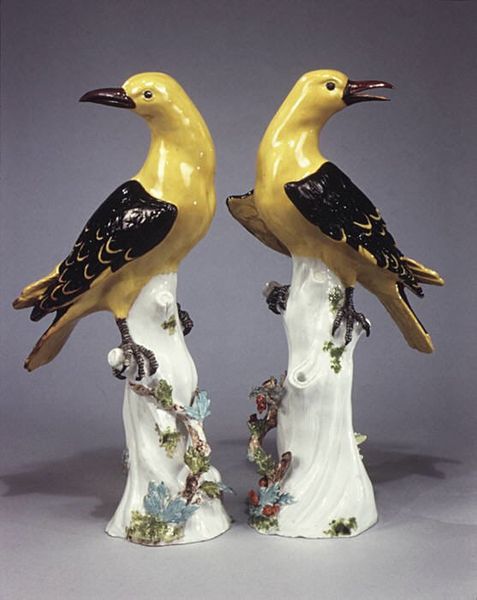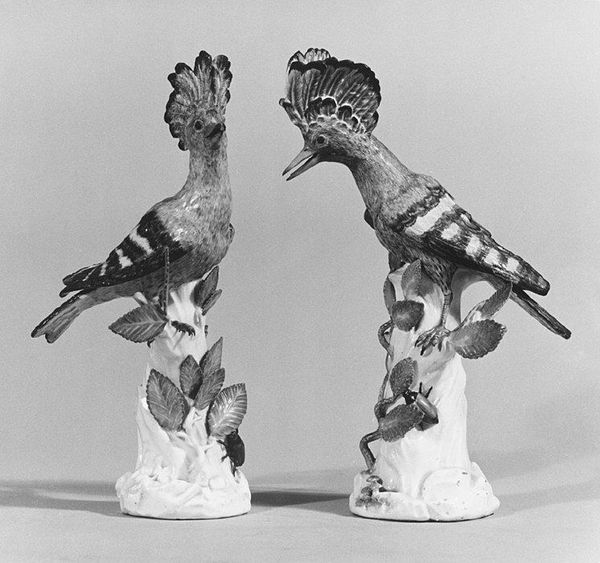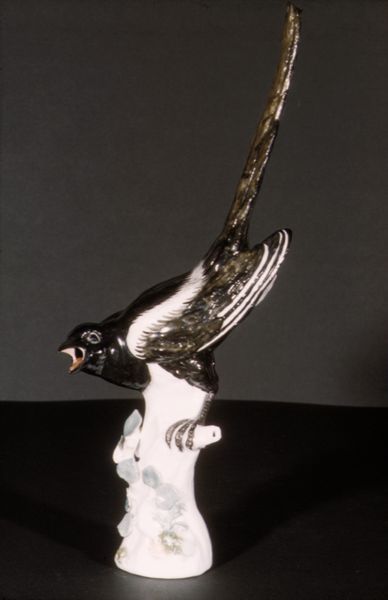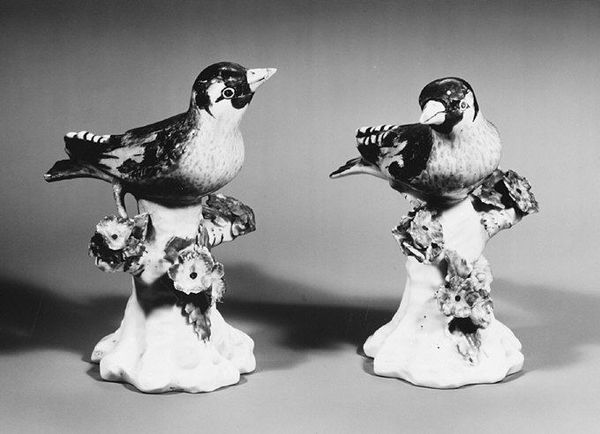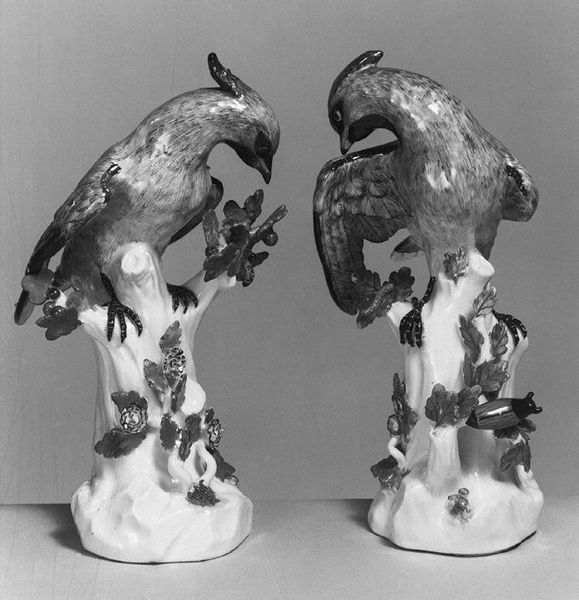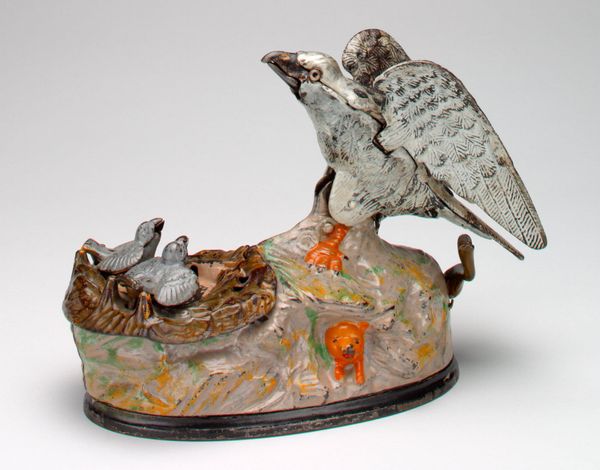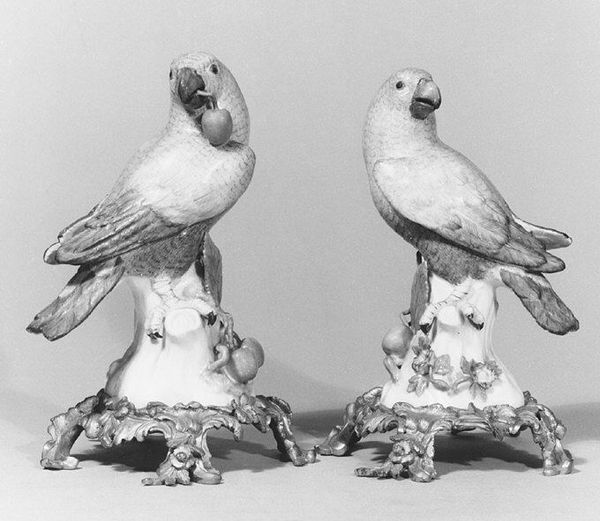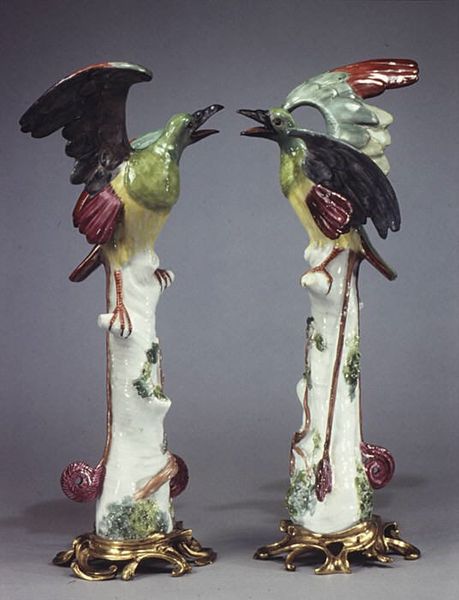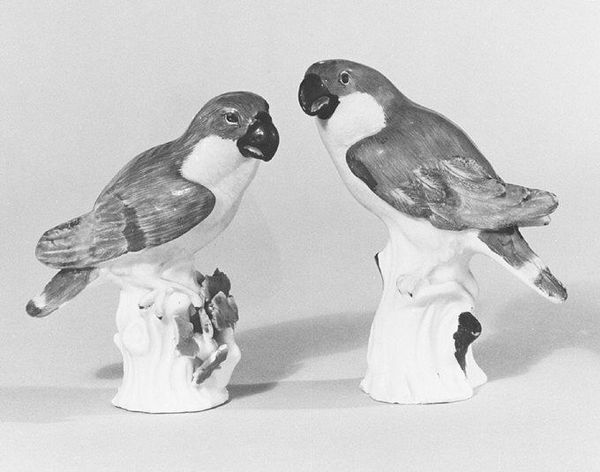
ceramic, porcelain, sculpture
#
sculpture
#
ceramic
#
porcelain
#
sculpture
#
decorative-art
#
rococo
Dimensions: H. 8 7/8 x W. 5 x D. 3 5/8 in. (22.5 x 12.7 x 9.2 cm)
Copyright: Public Domain
Curator: Here we have a charming porcelain sculpture, “Kingfisher,” created around 1735 by the Meissen Manufactory. Editor: They're utterly precious, these little birds! Their texture almost feels like looking at wet plumage, and those cool tones evoke a somber mood, appropriate given the stillness. Curator: Absolutely. Consider the material transformation here – the delicate porcelain, seemingly defying gravity, molded into these dynamic poses. The artists really manipulated the medium to mimic natural forms. Notice the speckled details on the bird's feathers—a hallmark of Rococo aesthetics. Editor: I'm most fascinated by the production itself, though. Meissen porcelain was incredibly prestigious; we need to acknowledge the labour behind extracting the raw materials, the crafting, and the firing of such exquisite work. And what of the cobalt used for these tints – from where did that originate, what did it cost? Curator: A fascinating point. Shifting focus slightly, note how the composition is designed with a distinct sense of movement and dynamism. Each bird is subtly tilted on its perch, creating tension and vitality within the sculpted form. These aren’t mere representations, they convey lifelikeness through artistic skill. Editor: I can appreciate the intention, yet the inherent paradox fascinates me: such hyperrealism only to then exist purely as a luxury item! They represent both nature and conspicuous consumption...quite contradictory! Curator: True, it is art deeply enmeshed with societal structure. Editor: Precisely! It leaves me thinking deeply about both the natural world and how that has been filtered through production... Curator: It reminds us to look closely, at form and the world that informed it.
Comments
No comments
Be the first to comment and join the conversation on the ultimate creative platform.

